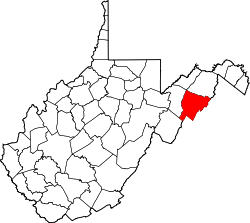Furnace, West Virginia | |
|---|---|
| Coordinates: 39°1′57″N78°36′10″W / 39.03250°N 78.60278°W | |
| Country | United States |
| State | West Virginia |
| County | Hardy |
| Elevation | 1,332 ft (406 m) |
| Time zone | UTC-5 (Eastern (EST)) |
| • Summer (DST) | UTC-4 (EDT) |
| GNIS ID | 1556839 [1] |
Furnace was an unincorporated community in Hardy County, West Virginia, United States.


